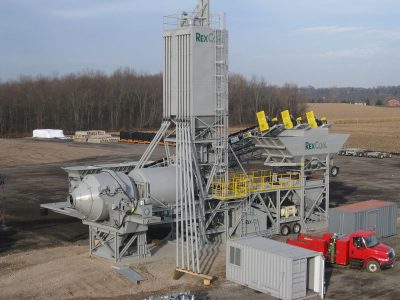Reprinted from N.C. Health News
North Carolina is home to some 2,500 permitted sources of air pollution, ranging from power plants to peanut roasters to lumber mills. More than half would no longer need permits under a state proposal. Dozens of those polluters are on the coast.
Supporter Spotlight
The proposal, from the N.C. Department of Environment and Natural Resources, would exempt more than 1,400 facilities deemed to be low-level polluters. To qualify, these facilities could emit no more than 10,000 pounds per year of a single pollutant or 50,000 pounds of a combination of pollutants before requiring a permit.
Facilities operating at about this level include concrete plants, rock quarries and furniture and auto body shops, among numerous others, according to Tom Mather, a spokesman for DENR’s Division of Air Quality.

The proposal could be significant because industrial air pollutants can cause immediate and long-term harm to people’s health. Among the pollutants addressed in air permits are nitrogen oxides, which contribute to the formation of smog, a respiratory threat; volatile organic compounds, which can be carcinogenic; and sulfur dioxides, which react in the atmosphere to form fine particles that can damage humans’ lungs.
DENR, in documents presented earlier this month to the N.C. Environmental Management Commission, said the proposal would affect only a small proportion of the state’s total air pollution. The potentially affected facilities make up, in total, less than 1 percent of these pollutants from stationary sources, while the polluters account for more than half of the state’s permits.
DENR staff have had to manage the paperwork for these permits while operating with fewer funds in recent years, Mather said.
Supporter Spotlight
“Our revenues have been declining pretty much across the board,” he said.
The loss of funds stems in part from lower statewide gas-tax revenues and declines in the power industry’s air pollution and consequent pollution fees, Mather said.
The proposal is “all part of our efforts to make our organization more efficient, given the changes in both the federal requirements that we have to enforce and the revenues we have coming in from different sources,” he said.
DENR says its proposal would free up staff to focus on larger, more significant sources of air pollution. It also estimates the proposal would save $768,225 in permit fees for businesses. DENR’s Division of Air Quality would also lose an estimated $280,425 from these fees, though DENR officials say it will no longer face the administrative costs from managing the permits.
In an apparent affirmation of the proposal, the Environmental Management Commission, which writes state regulations, on Sept. 10 agreed to go forward with a public hearing on the proposal, a required step before the EMC can change state rules.
Concerns About Monitoring
Environmentalists and public health advocates criticized the proposal, saying it would harm the state’s ability to monitor pollution.
For facilities without permits, “there can be no inspection process; there’s no secondary follow up for what they say they’re doing in their actual emissions,” said Terry Lansdell, the program director at Clean Air Carolina. “That’s a big red flag for me.”
Lansdell added that, despite their small contribution to overall state pollution, these facilities tend to be located in densely populated areas.
“These small sources are not isolated sources in the middle of nowhere,” he said. “They might be the paint and body shop on the corner.”
Myra Blake, an attorney at the Southern Environmental Law Center, said the proposal “does seem unwise” given that the General Assembly is considering a statewide reduction in air-quality monitors.
But DENR’s Mather said that with their small level of air pollution, the affected facilities don’t warrant a major concern about the public’s health. He also said that state and federal rules will still apply to facilities, even if they don’t have permits.
Mather did acknowledge though that North Carolina uses air permits to ensure facilities follow state rules, since permits require facilities to monitor and report their emissions to the state.
But if a facility is operating without a permit, the responsibility will likely fall on residents to complain about increases in air pollution, Mather said.
Counting Pollution
Under current state rules, small facilities only require air permits if they emit more than 10,000 pounds of a single pollutant per year, the same threshold included in DENR’s proposal. But under the proposal, facilities could also emit up to 50,000 combined pounds of different pollutants each year before requiring a permit.
In addition to this new combined threshold, DENR is asking permission to use actual data when deciding whether a permit is necessary. Currently, when a business applies for a permit DENR estimates pollution by using models.
But the current models exaggerate pollution, Mather said, since they assume that facilities operate all day, throughout the year.
As for facilities that haven’t yet been built, DENR would still have to estimate air pollution. It would base its permit requirements on these projections.
But DENR would use a new method, one that would consider the actual operating hours of a facility, Mather said.








